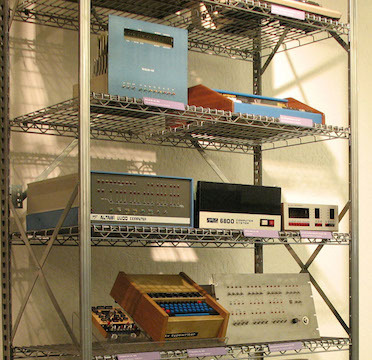Cross-posted to my work blog and to Linkedin
If there has been one overarching theme of the last few years in IT, it has been the changing relationship between enterprise IT departments and the users that they support.
Users have always wanted more IT faster, and this has always driven advances in the field. Minicomputers were the shadow IT of their day, democratising access to computing that had previously been locked up in mainframes. (By the way, did you know that the mainframe is fifty years young and still going strong?)
Departments would purchase their own minicomputers to avoid having to share time on the big corporate machines with others. This new breed of machine introduced application compatibility for the first time. In other words, it was no longer necessary to program for a specific machine. Higher-level languages also made that task of programming much easier.
Microcomputers and personal desktop computers were the next step in that evolution. At this stage it became feasible for people to have their own personal machine and run their own tasks in their own time, and for a while IT departments lost much of their control. The arrival of computer networks swung the balance the other way, until the widespread adoption of mobile devices started the swing back again.
Seen in this way, cloud computing is just the latest move in a long dance. The tempo is increasing, however, and it becomes more critical to make the right moves.
One make-or-break move is the very first public one, when a company decides to shift at least some of its workloads to the public cloud. It’s important to remember that Amazon was not designed to be traditional IT and trying to treat it that way is a route to failure.

To get an idea of the sort of problems we want to avoid, here’s an example from a completely different domain. If you have ever furnished a house or a flat, the odds are good that you have wandered around IKEA, feeling lost and disoriented, and possibly having a furious argument with your significant other as well.
Assuming the shopping trip didn’t end in mayhem and disaster - and personally I always count it as a success when I get out of IKEA without either of those - you may well have bought an Expedit shelving unit. The things are ubiquitous, together with their cousins, the Billy shelving units. I should know, I own both.
The bad news is, IKEA is discontinuing the Expedit and replacing it with a slightly different unit, the Kallax. This has infuriated customers who liked being able to replace or extend their existing furniture with additional bits.
What has this got to do with IT? What IKEA has done is break backwards compatibility in their products: you can no longer just get "more of the same", and unless you are furnishing an entire new home, you will probably have to deal with both the old and the new model at the same time.
Enterprise IT departments are facing the same problem with cloud computing. They want to take advantage of the fantastic capabilities of this new model, but they need to do it without breaking the things that are working for their users today. They don’t have the luxury that startups do of engineering their entire operation from the ground up for cloud. They have a history, and all sorts of things that are built on top of that history.
On the other hand, they can’t just treat a virtual server in the public cloud as being the same as the physical blade server humming away in their datacenter. For a start, much of the advantage of the public cloud is based around a fundamentally different operating model. It has been said that servers used to be pets, given individual names, pampered and hand-reared, while in the cloud we treat them like cattle, giving them numbers and putting them down as soon as it’s convenient.
The public cloud is great, but it works best for certain workloads. On the other hand, there are plenty of workloads that are still better off running on-premises, or even (gasp!) directly on physical hardware. The trick is knowing the difference, and managing your entire IT estate that way.
This is part and parcel of BMC’s New IT: make it easy for users to get what they need, when they need it. To find out more about what BMC can do to make your cloud initiative successful, please visit www.bmc.com/cloud.